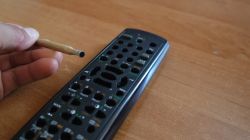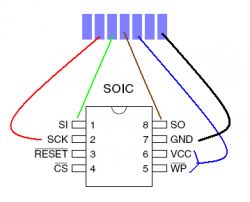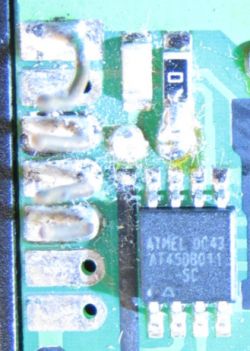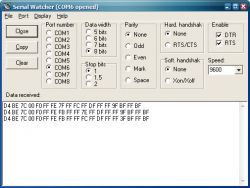Gelip wrote: And I think I have a solution to all the disadvantages described here - description in commentary under the author's video, but I will write here as well. I warn you in advance that I have not tested but it seems very good:
[letter: a22bccf874] [*: a22bccf874] we need a PCB size matrix, e.g. 5x20cm with holes, e.g. 5mm in the buttons on the remote control PCB - you can remove the remote control PCB, scan or take a picture or simply measure and scratch it manually in a graphics program
[*: a22bccf874] now we print it 1: 1 on the printer and cut holes and a matrix (maybe holes with a punch or a sharp drill or a punch - they are for making holes in leather belts)
[*: a22bccf874] cut a rectangle from the aluminum foil reduced on each side by 0.5 - 1cm, which in our case is 4x19cm
[*: a22bccf874] stick this strip of foil to the matrix with cut holes so that the foil is 0.5 cm from the edge - e.g. with adhesive tape (it would hold this 0.5 - 1cm on the edges)
[*: a22bccf874] now it is enough to put the side with holes and aluminum foil visible through the holes on the pilot PCB
[*: a22bccf874] on it we put a membrane with rubber buttons and close the remote control [/ letter: u: a22bccf874]
Of course, at the very beginning, after disassembling the remote control, we clean the PCB and the membrane with buttons.
No dabbing with some tiny pieces of tape, foil and more tape.
Added after 36 [minutes]: PS You can always like this:





Hello!
Your "patent" is a solution straight from the 70's, I saw keyboards of old calculators.
And in general, I throw away the remote controls when I don't go to buy or someone brings an old TV with a remote flooded with beer or a lens for repair, the entire matrix with rubber bands under the faucet with Ludwik, the housing is also in the same way.
I wash the printed circuit board with IPA or in "field conditions" with denatured alcohol or with aftershave, then I dry everything, fold it and the remote control works.
I do not play when the remote control goes to buy, on TV Sharp Aquos, already so older, the remote failed (it gave random commands), because the remote control was cleaned several times in my way. The pilot went to the trash and the original pilot was purchased on Allegro, admittedly PLN 60 with the shipment, but Mom is 69 years old, she does not see very well. She "learned" the old pilot by heart, the new one had to be identical.
The repair also makes no sense if I buy a used (but not used) original remote control, a lot of it on the stock exchanges, dragged from Germany or Scandinavia.
There are also remotes that cannot be repaired at all - the rubber crumbles after 2 years, this applies to remotes from "market" equipment, then Xiaomi smartphones are the best ... almost all have an IR transmitter, the issue of Android applications, I have Mi 10T Lite 5G and it often saves the situation of the lack of a remote control.










